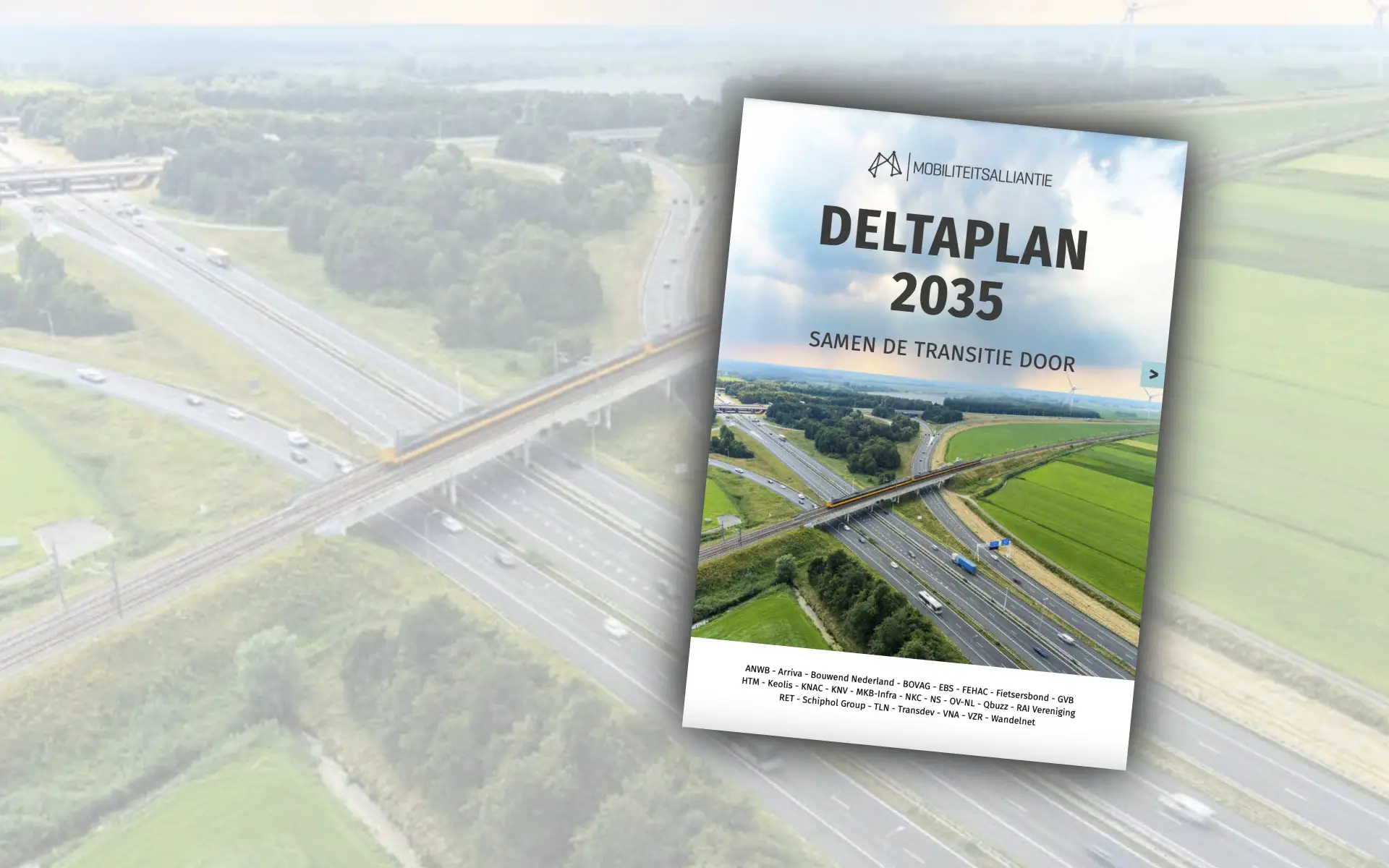Mobility Alliance calls for additional focus on mobility in coalition agreement
Mobility Alliance’s Delta Plan 2035
First, some explanation of the Mobility Alliance. This party represents a diverse group of organizations that place great value on mobility. The members of the Mobiliteitsalliantie are ANWB, Arriva, BOVAG, Bouwend Nederland, EBS, FEHAC, Fietsersbond, GVB, HTM, Keolis, KNAC, Koninklijk Nederlands Vervoer, MKB-Infra, NKC, NS, OV-NL, Qbuzz, RAI Vereniging, RET, Schiphol, Transport & Logistiek Nederland, Transdev, VNA, Vereniging Zakelijke Rijdijders and Wandelnet.
Marga de Jager is president of the Mobility Alliance: “With Delta Plan 2035, we are contributing solutions for the next cabinet to maintain and improve accessibility to housing, work, care, education and recreation. Together we face the task of keeping travel affordable for everyone and making every mile traveled a clean mile.”
Warning
The 25 industry parties warn that the Netherlands will grind to a halt if the new administration does not choose to keep the Netherlands accessible. And without firm policies to make mobility more sustainable, it falls short of its goals. Substantial investment from the state is needed.
Central themes
Electric driving must become more affordable and it must become more attractive to combine clean modes of transportation. The scaling up of public transport nationwide must stop, investment is just what is needed. In addition, investment in loading capacity for consumers and business owners is needed, as capacity will fall short by 2030 if policies remain unchanged.
Affordability. The consumer price index for transportation has risen sharply faster than the general consumer price index since 2020. Traveling means participating. The Mobility Alliance wants to prevent people from getting left out by not being able to pay for their travel.
Accessibility. This requires additional investment in management and maintenance of infrastructure on the main and underlying network. Planned investments (such as the North/South line to Schiphol Airport and the road projects pushed forward once nitrogen space returns) must continue. Making new expansion plans should not stop either. Smarter use of existing networks and means of transport with hubs and the spreading of passenger flows, as well as the proximity of facilities, deserve more attention and are extremely topical in times of scarcity.
Scarcity
Scarcity of people and resources and limited nitrogen space make smart solutions even more important than before, according to De Jager: “In spatial planning, we need to look more closely at how we plan facilities close to each other and thus avoid unnecessarily long trips. Smarter use of mobility is also becoming more important, including by spreading trips and connecting them via good hubs.” But there is no single solution, De Jager said. “As the population and economy grow, expansion also remains necessary.”
Initiatives and examples
The Delta Plan 2035 contains numerous initiatives and examples for policymakers and employers. Thus, in addition to asking, the industry itself contributes heavily. Outline of the measures:
Accessibility:
Firmly commit to making smarter use of current capacity by:
- connect transport flows through multimodal hubs, MaaS and a future-proof pay-for-use system
- spread transport flows throughout the day, including with the help of a good employer approach. In times of scarcity, this topic is extremely timely.
- Deploy proximity whenever possible by planning housing, work, amenities and connections near each other in land use plans. This avoids unnecessary additional transport movements.
- Complete committed projects, and do not cut back on them. Consider the North/South lines the deferred road projects once nitrogen space returns.
- Invest extra in management and maintenance. Not only for the main infrastructure, but also in the underlying decentralized networks. Catching up is desperately needed.
- Given long lead times, keep planning for the infrastructure of the future.
- Always include road safety in these projects, especially for cyclists as well
Sustainability
- Provide sufficient power, grid capacity and charging facilities for the electrification of our passenger and freight transportation system
- Make it attractive to take sustainable modes of transportation such as bicycle and ov, including by removing administrative and financial obstacles. For example, by removing restrictions on the private use of public transport season tickets and calling more attention to attractive existing schemes for bicycle, moped and scooter use.
- Make the transition to zero emission automobility financially attractive. Now we see an opposite movement with purchase subsidies going unused as consumers face high charges.
This can include:
- Adjust the budget system so that soil erosion (e.g. due to lower excise tax revenues as a result of the move to zero emissions) does not have to be absorbed within the automotive domain
- Continue the purchase subsidy for electric cars
- Ensure that electric vehicles will not pay more MRB than their gasoline equivalent.
- Provide weight correction.
- Prevent further impoverishment of public transport by maintaining its availability. Investment is just what is needed
Affordability
- Because mobility is the way for many people to participate socially, it is important to keep all forms of mobility affordable.
- Make it more financially attractive to choose sustainable travel options.
To achieve the above, a combination of cash flows is needed:
- Expansion of existing financial resources at Ien
- Additional resources from EZK to boost sustainable mobility and charging infrastructure capacity
- A solution to the loss of revenue at Finance
- In addition, decentralized governments play a role.
Furthermore, the alliance advocates:
- using alternative funding (from the private domain) to pay for new infrastructure. The State has already identified promising models for this purpose.
- A political appraisal of these models to see which are actually applicable is needed.
- Unbundle money flows for public transit and health care transportation to better utilize available budgets.
Download Delta Plan 2035? You can do that here!

